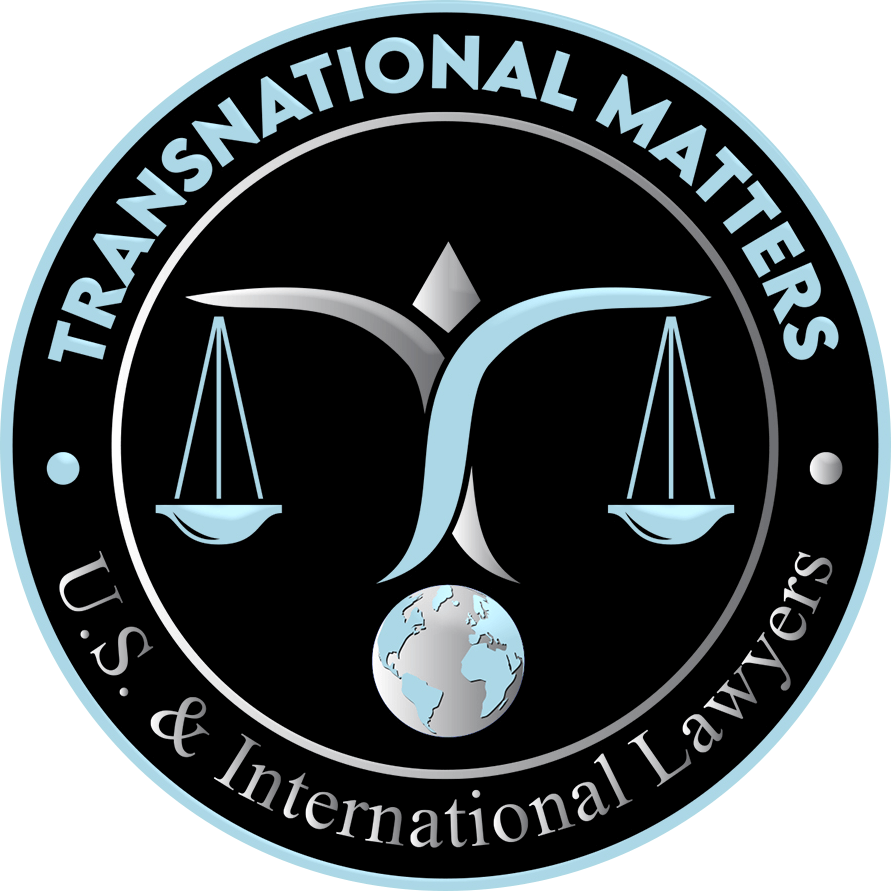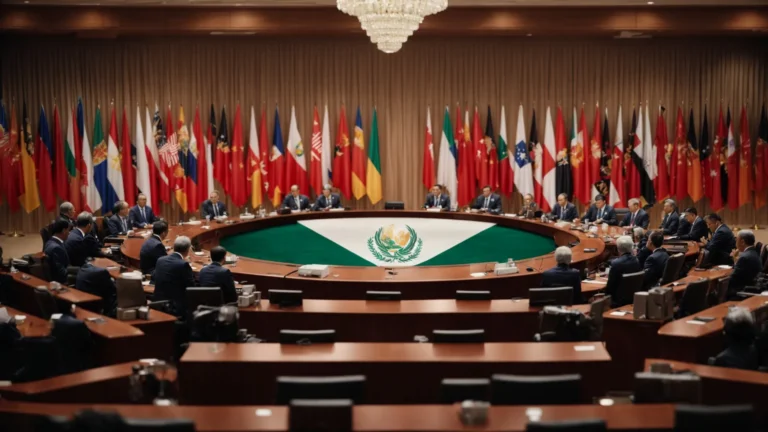Exploring the Multilateral Investment Court System’s Impact
As nations globally strive to harmonize free trade with sustainable development, the Multilateral Investment Court emerges as a pivotal institution in this intricate dance.
Acting as an arbiter in the complex world of energy disputes and international trade law, this court aims to introduce a new layer of transparency and consistency in how investment conflicts are resolved.
Its inception is a nod to the world’s growing demand for impartial and fair mechanisms that safeguard the interests of sovereign states and investors alike.
With stakeholders from various industries watching closely, the court’s decisions are set to leave indelible marks on the future of international commerce.
Keep reading to unearth how this judicial body could reshape the landscape of global investment and economic collaboration.
Key Takeaways
- The Multilateral Investment Court Aims to Standardize and Improve the Arbitration of International Investment Disputes
- Jurisdictional Scope Includes Ethical Resolutions, Investor-State Relations, and Rulings That May Affect International Trade Laws
- The Court’s Decisions Have Significant Global Influence, Potentially Shaping Economic Policies and Investment Patterns
- Skepticism Regarding the Court Centers on Its Impact on Sovereignty, Transparency, and Established Arbitration Practices
- The Future of the Court May Bring Changes in Risk Management and International Norms, Emphasizing Diplomacy and Sustainable Development
Unveiling the Role of the Multilateral Investment Court
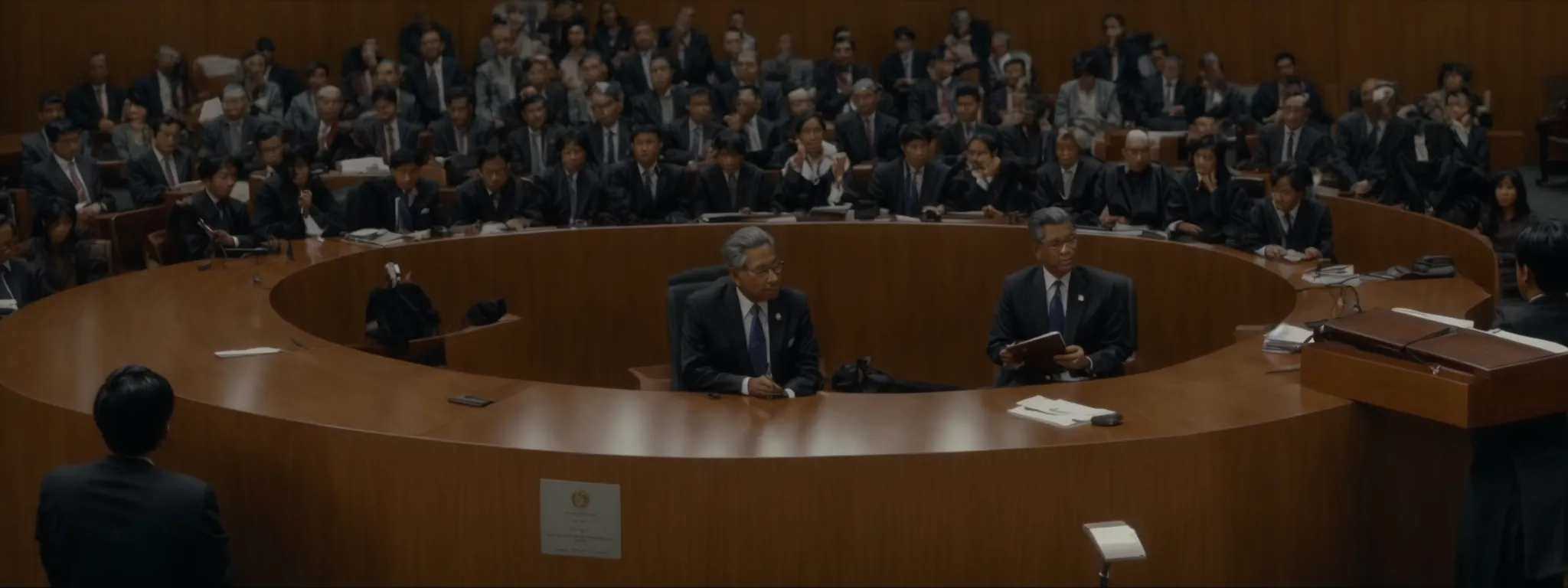
The Multilateral Investment Court has emerged as a pivotal entity amidst the intricate web of international investment, promising a new era of arbitration that transcends national boundaries.
Diving into its essence, the court’s purpose and objectives manifest as a beacon for fair and transparent dispute resolution, necessitating an in-depth understanding of its responsibilities.
As it stands, the Court asserts jurisdiction over cases that often pivot on the delicate balance between sovereign rights and investor interests, encompassing elements such as trade agreements and allegations of corruption.
With an operation base rooted in the Netherlands, this institution not only serves as a watchdog for investor-state actions but also operates as a central node in the global justice network, readily searchable via any adept search engine.
Engaging with the Court’s dominion reveals a diverse ensemble of influential actors, from nation-states to multinational enterprises, all of whom stand to benefit from its efficient mediation and definitive verdicts.
Thus, the Multilateral Investment Court embodies a transformative stride towards fortifying the integrity of cross-border investments.
Defining Its Purpose and Objectives
The Multilateral Investment Court is tasked with interpreting and applying international law, particularly as it pertains to the disputes arising under international investment agreements, including the complexities of free trade agreements and bilateral investment treaties. Its creation seeks to address the inefficiencies and inconsistencies that arise from the current ad hoc arbitration system, paving the way for a more coherent and reliable means of resolving investor-state disputes.
Located in Vienna, this institution operates with a mandate to enshrine fairness in proceedings that involve the delicate nexus of international business and sovereign governance. It draws on precedents such as the Energy Charter Treaty to ensure a level playing field, where states and investors can seek impartial adjudication without the shadow of national bias, thus solidifying trust and stability in the landscape of global investment.
Examining the Court’s Jurisdiction and Authority
The jurisdiction of the Multilateral Investment Court extends to embodying ethics in global economic interactions, specifically targeting the resolution of disputes where taxation policies and international investment overlap. It holds the authority to influence future legal frameworks by setting precedents with every ruling.
When issuing opinions, the Court meticulously considers previously established jurisprudence to ensure consistency and integrity in dispute resolution. Its authority is recognized in the realm of investment law, often serving as a critical arbiter in cases where stakes are high, and the fairness of tax obligations is called into question.
Identifying Key Stakeholders and Beneficiaries
In the expanding realm of international law, key stakeholders in the Multilateral Investment Court system are as diverse as they are integral to its operations. Among them stand sovereign nations, private investors, and industry powerhouses, particularly within the renewable energy sector, all seeking to ensure their investments are protected through the impartial adjudication this Court promises to deliver.
The community benefits directly from the court’s dispute resolution efficacy, as it plays pivotal roles as an arbitrator ensuring that global investment norms are crafted with equity and justice. This arbiter contributes profoundly to the peace of mind of both investors and host nations, by offering transparent, fair, and authoritative legal groundwork which can be subsequently codified within educational resources such as ebooks.
The Genesis and Necessity of the Multilateral Investment Court

The inception of the Multilateral Investment Court was a direct response to historical disputes and the pressing need for innovations in the arbitration process, critically viewed through the lens of increasing ambiguities in treaty interpretations.
Pioneered by the Council of the European Union, the Court’s foundation was laid to fortify the legitimacy of international investment dispute resolutions.
A retrospective glance at vexing legal skirmishes reveals a tapestry of contentious standoffs between state sovereignty and investor rights, particularly pronounced in cases predating the court’s existence, such as the protracted disagreements involving the United Kingdom.
Acknowledging these complexities, the Court emerged, evolving into an essential pillar in the architecture of global investment, striving to mend the gaps that traditional mechanisms could no longer bridge.
Highlighting Historical Disputes and Resolutions
Historical disputes, such as those arising from complex trade agreements like the Transatlantic Trade and Investment Partnership, have profoundly shaped the legal landscape in which the Multilateral Investment Court now operates. Instances, where Japan’s investments clashed with host-state policies, underscore the need for a body that can adeptly balance autonomy with investment protection.
In cases involving the Comprehensive Economic and Trade Agreement, the court’s ability to integrate amicus curiae briefs shone a light on the nuanced perspectives within international trade conflicts. This inclusion heralds a breakthrough in acknowledging the multifaceted nature of global investment disputes and the profound implications for sovereign and corporate entities alike.
Understanding the Court’s Formation and Evolution
The formation of the Multilateral Investment Court system can be traced back to a collective aspiration for impartiality in the resolution of disputes concerning foreign investment. Grappling with the challenge of avoiding bias, the system launched an inclusive approach to establish a court seen as equitable by all participating parties, from developed to developing nations.
In molding its operational framework, the Court paid close attention to lessons learned from systems such as ASEAN, which had grappled with the complexities of integrating diverse legal traditions. South Africa’s example, where public consultation played a central role in shaping investment policies, also influenced the court’s foundational policies, reinforcing the principle that those affected by foreign investment should have a voice in its governance.
Addressing the Gap in International Investment Dispute Resolution
The establishment of the Multilateral Investment Court is a progressive response to the deficiencies noted in the International Centre for Settlement of Investment Disputes (ICSID). The European Parliament recognized the necessity to evolve beyond the ICSID’s limited framework, with this court solidifying an enhanced, institutionally unified system to handle investment disputes more comprehensively under the auspices of the Treaty of Lisbon.
In concert with the European Parliament’s initiatives, the creation of the Multilateral Investment Court intends to introspect, refine, and holistically improve the adjudication process of foreign investment conflicts. This addresses the longstanding void left by traditional mechanisms, as codified by ISSN protocols, marking a strategic pivot towards transparency and consistency in international trade law.
Analyzing the Potential Impact on Global Investment Frameworks
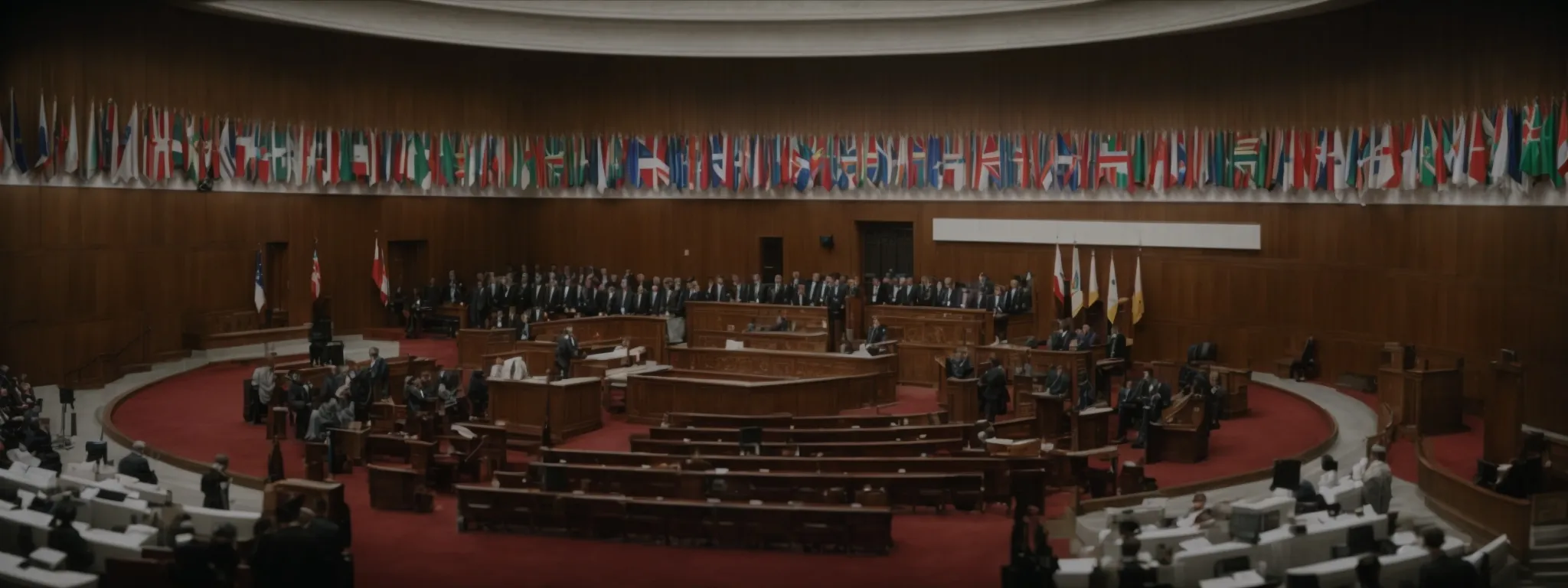
The inauguration of the Multilateral Investment Court System heralds a seismic shift in the bedrock of international investment law, poised to recalibrate the fundamental dynamics of investor-state relationships.
Legislators around the world, including those in the Czech Republic, anticipate the ripple effects that could accelerate economic growth and foster new paradigms in investment.
This judicial body stands on the cusp of influencing pivotal international trade agreements, potentially altering long-standing principles that have guided cross-border capital flows.
As the Court’s decisions begin to propagate, stakeholders must closely evaluate how emerging legal frameworks might redirect current investment patterns and impact future international investment agreements.
Predicting Changes in Investor-State Relationships
The Multilateral Investment Court’s emergence, under the guidance of the United Nations Commission on International Trade Law, signals a transformation in investor-state dynamics. By providing a refined judicial compass for international trade disputes, the court redefines the landscape for policy development and enforcement, attributing a new layer of predictability and security to foreign direct investments.
Owing to its potential role in arbitrating sensitive trade conflicts previously governed by frameworks such as the North American Free Trade Agreement, the court is set to recalibrate the power equilibrium between nations and investors. This recalibration anticipates more structured negotiations and conflict resolutions, fundamentally altering the fabric of international trade and policy articulation.
Assessing Implications for International Trade Agreements
The adjudicative outcomes of the Multilateral Investment Court System may necessitate a reevaluation of various international trade agreements, including those involving Mexico. If the Court’s judgment were to establish norms that prioritize human rights and ethical business practices, these considerations could become more prominently integrated into the description of future treaties.
At its core, the establishment of the Multilateral Investment Court System represents an investment in innovation regarding the enforcement of international law. The potential for this system to refine the execution of trade agreements rests on its capability to issue judgments that harmonize the intricate relationship between economic development and the protection of human rights.
Evaluating Potential Shifts in Investment Patterns
The initiation of the Multilateral Investment Court’s system under United Nations auspices could facilitate a more multilateral approach to global governance, potentially creating a shift in investment patterns. Stakeholders, including those within Canada’s robust financial ecosystem, are meticulously analyzing the influence that this new judicial mechanism may have on their strategic international investments.
- Introduction of a United Nations-supported court system: How it cultivates a foundation for multilateral governance.
- Shifts in investment patterns: The significances for Canadian and international stakeholders in response to the Court’s jurisprudence.
As the legal community awaits the repercussions of this transition, law review journals are poised to dissect how rulings from the Court might affect long-established investment customs. The sway that this institution wields over future investment decisions can potentially redefine multilateralism in the financial domain.
Criticisms and Controversies Surrounding the Court System

The advent of the Multilateral Investment Court System has not solely been met with appreciation; it has also sparked a spectrum of skepticism and apprehension among various stakeholders.
These concerns encompass potential conflicts of interest that might arise in contractual disputes, the breadth and depth of the tribunal’s authority, challenges to the standard rule of law stemming from its unique appeal processes, and fears related to the erosion of state sovereignty.
As this judicial body gains prominence, the array of voices raising questions about its function and its alignment with international standards of ethics and legal practice only grows louder, demanding a thoughtful examination of the Court System through the kaleidoscope of global scrutiny.
Addressing Concerns From Opposing Stakeholders
Amidst the discourse on the Multilateral Investment Court System, some stakeholders express reservations, particularly pointing to Article 267 of the Treaty on the Functioning of the European Union. They voice concern that the Court System could sidestep the established order and the authority of the European Union’s own appellate body, thus potentially conflicting with existing legal frameworks.
Others critique the perceived opacity in the dissemination of information and fear an inadequacy in the System’s ability to establish a robust infrastructure capable of supporting the expansive needs of an arbitral tribunal. Such concerns are aimed not at the concept of an international arbitration mechanism but at ensuring that its implementation enhances, rather than complicates, the current landscape of global investment law.
Discussing Legal and Ethical Criticisms
Critiques emerging from Singapore, a hub for arbitration in Asia, question if the Multilateral Investment Court System might overlap and potentially conflict with the well-established practices of the Permanent Court of Arbitration. Legal professionals emphasize the importance of a clear code of conduct to prevent dilution of established mediation institutions’ effectiveness in the burgeoning climate of international dispute resolution.
Furthermore, ethical considerations are at the forefront of debates, especially as climate change becomes an increasingly critical component of investment disputes. The global legal community is closely scrutinizing how the Multilateral Investment Court System will integrate environmental responsibility within its code of conduct, ensuring that mediation outcomes consistently contribute to sustainable development goals while respecting the intricate balance of global economic interests.
Exploring Fears of Sovereignty Erosion
Among nations like Vietnam, trepidation has surfaced regarding the Multilateral Investment Court System’s potential encroachment on state autonomy. Critics argue that the imposition of international arbitration upon investment agreements risks undermining a nation’s ability to govern its own economic and legislative interests.
- The tension between national sovereignty and the authority of international arbitration forums.
- Vietnam’s concerns over the potential loss of control over its economic regulations due to binding decisions from a global court.
- African nations joining the debate, wary of international courts dictating terms in investment agreements.
This predicament has sparked an intensified debate across various African nations, which are cautious of any international system that might insidiously erode their sovereign rights. The apprehension lies in the power differential between developed countries and less economically powerful states, which could be exacerbated within the framework of global adjudication systems.
Case Studies: The Multilateral Investment Court in Action

The examination of the Multilateral Investment Court System and its rulings offers an insightful glimpse into the entangled relationship between international regulations and sovereign policies.
Landmark cases overseen by the commission have carved a path for understanding the implications of judgements that resonate through France’s approach to foreign direct investment.
This scrutinizing look delves into how pivotal decisions shape the trajectory of the global economy, often necessitating alterations in the strategic deployment of a nation’s directive.
Each case illustrates the Court’s capacity to set significant precedents—precedents that not only resolve high-stakes disputes but also steer policy amendments and recalibrate legal interpretations in the sphere of international investment and trade.
Reviewing Landmark Cases and Their Outcomes
The adjudication landscape within economic law reflects the gravity of cases handled by the Multilateral Investment Court, illuminating its ability to navigate through complex international disputes. Landmark rulings have forged clarity on contentious issues, applying the Convention on the Recognition and Enforcement of Foreign Arbitral Awards and imposing checks against bias that may influence arbitral outcomes.
The Court’s participation has been instrumental in disputes reviewed by the European Commission, ensuring procedural fairness aligns with directives from the Court of Justice of the European Union. In these diverse roles, the Court exercises its influence, sharpening the contours of economic law through its conclusive judgments.
- Adopting the Convention on the Recognition and Enforcement of Foreign Arbitral Awards to guide fair resolution processes
- Affirming the European Commission’s role in dispute resolution to uphold the principles set by the Court of Justice of the European Union
- Highlighting the impact of the Multilateral Investment Court’s decisions on the evolution of economic law
Analyzing Precedents Set by the Court’s Decisions
The decisions rendered by the Multilateral Investment Court system have far-reaching implications, influencing both the legal precedents within its jurisdiction and the practices of entities such as Belgium, which must now align its international trade policies with the rulings handed down. As the Court forges its path, it challenges the long-held tenets of the World Trade Organization, prompting a reexamination of regulatory norms and enforcement.
Through the adjudication of complex disputes, the Court’s rulings contribute to the evolving body of international law, expanding open access to legal documents and decisions. By asserting jurisdiction in contentious cases, this judicial entity crafts a narrative that resonates with future arbitration, cementing its position as a stalwart in the interpretation and application of law across international borders.
Examining the Court’s Influence on Policy Changes
Analyzing the activities of the Multilateral Investment Court through group interaction and policymaking, one observes a shift from ad hoc arbitration to structured regulation. This international court of justice has mandated the adaptation of global policy frameworks, emphasizing sustainable and equitable investment practices that can be reviewed in official policy documents widely available in pdf format.
The Court’s determinative resolutions have pressed national and international entities to reevaluate existing regulations, with a significant focus on consistency and adherence to international standards of justice. These changes mirror the procedural rigor traditionally exercised by the International Court of Justice, reinforcing the significance of harmonious legal practices in international relations.
The Future Outlook for the Multilateral Investment Court System
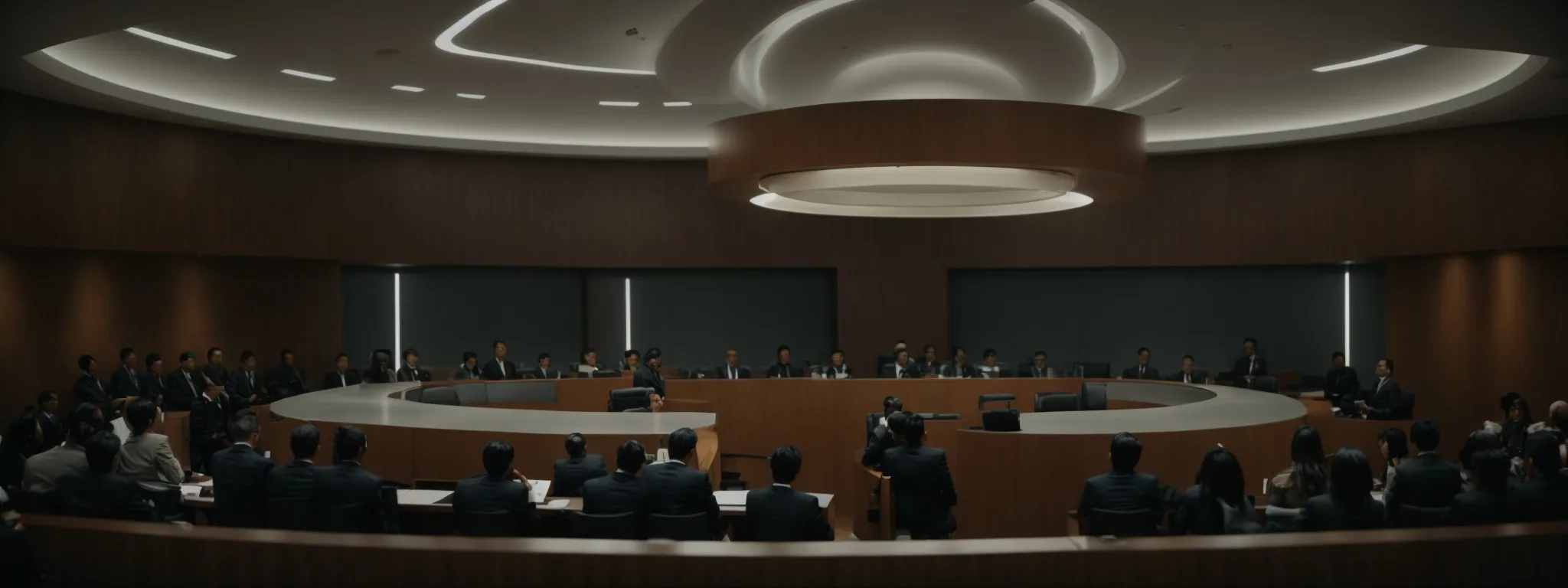
The Multilateral Investment Court System, a keystone in the architecture of international jurisprudence, stands at a crossroads of progressive change and traditional practice.
Across the global investment community, there is rise in speculation about potential expansions or modifications that could be on the horizon for the Court.
Stakeholders from Venezuela to Vietnam keep a watchful eye on this evolving institution, considering how it might advocate for respected principles such as “most favoured nation” clauses and navigate the complexities of international copyright laws in an increasingly digitized world.
As scholars and legal practitioners pour over books on international justice and dissect copyright directives, predictions about the long-term impacts of this Court on economic practices gain substance.
Imagining its future involvement in disputes suggests a judicial body ready to puncture precedents and redefine the contours of global justice, becoming an indispensable participant in the resolution of investment disputes that shape nations and their economies.
Speculating on Expansions or Modifications to the Court
The ever-evolving landscape of international economic law suggests that the Multilateral Investment Court could be pivotal in shaping the future of global trade agreements. With the African Continental Free Trade Area gaining momentum, it’s conceivable that the Court will play a crucial role in resolving disputes that emerge from this extensive trade agreement, potentially refining the nexus between regional and international legal frameworks.
Meanwhile, the relationship between the Multilateral Investment Court and entities like the European Union could invite modifications to the Court’s purview or practices. As the European Union continues to assert its influence in shaping international standards, the intersection with the Court’s decisions may prompt a synergistic evolution, guided by sustainability benchmarks set forth by the International Institute for Sustainable Development.
Predicting Long-Term Impacts on Global Economic Practices
As stakeholders gauge the enduring reverberations of the Multilateral Investment Court System, one consideration falls on how risk management practices might adjust under the system’s influence. Particularly, Germany’s rigorous approach to maintaining economic stability may witness recalibration, as adoption of the Court’s decrees ensures a heightened diligence in international investments.
Observers from the financial sector and beyond anticipate that the operations of this Court may prompt international committees to scrutinize and potentially refine risk evaluations for cross-border investments. Such developments could herald a collaborative advancement towards holistic economic risk management, synchronizing individual country measures with broader, international judiciary guidance.
Imagining the Court’s Role in Future International Disputes
As international commerce continues to expand, the Multilateral Investment Court System is poised to become a significant forum for dispute resolution. These cases, often complex and high stakes, will demand the Court’s acute focus on negotiation to unravel intricate legal standoffs.
In envisioning the Court’s trajectory, one predicates its potential emergence as a preferred avenue for parties seeking to circumvent the protracted processes of traditional litigation. Its specialization in negotiation and mediation could serve to expedite resolutions, fostering a climate where diplomacy and jurisprudence converge.
Conclusion
The Multilateral Investment Court System stands as an innovative forum, addressing inconsistencies in international investment disputes with its equitable judgements.
Through its rulings, the Court influences global investment practices, fostering predictability and fairness in investor-state relations.
Its resolutions shape international law, potentially impacting future economic and trade policies across nations. As it evolves, the Court could significantly redefine the arbitration landscape and bolster economic governance on a global scale.
